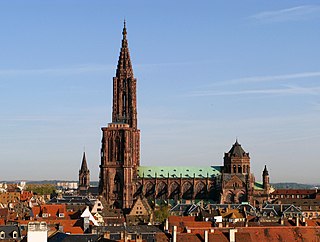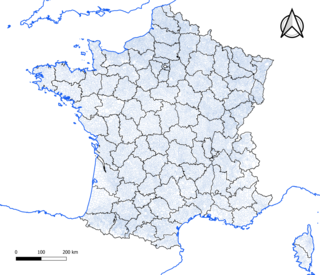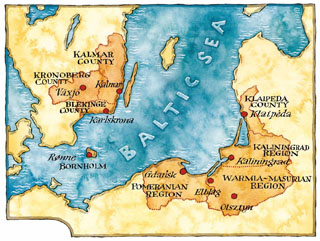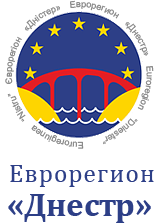
Strasbourg is the prefecture and largest city of the Grand Est region of eastern France, at the border with Germany in the historic region of Alsace. It is the prefecture of the Bas-Rhin department and the official seat of the European Parliament.

Alsace is a cultural region and a territorial collectivity in eastern France, on the west bank of the upper Rhine next to Germany and Switzerland. In January 2021, it had a population of 1,919,745. Alsatian culture is characterized by a blend of German and French influences.

Mulhouse is a French city of the European Collectivity of Alsace. It is near the France–Switzerland border and France–Germany border. It is the largest city in Haut-Rhin and second largest in Alsace after Strasbourg.

The commune is a level of administrative division in the French Republic. French communes are analogous to civil townships and incorporated municipalities in the United States and Canada, Gemeinden in Germany, comuni in Italy, or municipios in Spain. The UK equivalent are civil parishes. Communes are based on historical geographic communities or villages and are vested with significant powers to manage the populations and land of the geographic area covered. The communes are the fourth-level administrative divisions of France.
In European politics, the term Euroregion usually refers to a transnational co-operation structure between two contiguous territories located in different European countries. Euroregions represent a specific type of cross-border region.

The Øresund Region, also known as the Greater Copenhagen Region, is a transnational metropolitan region encompassing the Capital Region and Region Zealand in eastern Denmark and Region Skåne and Region Halland in southern Sweden. Centred around the Øresund strait and the two cities which lie on either side, Copenhagen in Denmark and Malmö in Sweden, the region is connected by the Øresund Bridge, which spans the strait at its southern end, and the HH Ferry route between Helsingør, Denmark, and Helsingborg, Sweden, at the narrowest point of the strait.

Forbach is a commune in the French department of Moselle, northeastern French region of Grand Est.

Romania's administration is relatively centralized and administrative subdivisions are therefore fairly simplified.

The Greater Region, formerly also known as SaarLorLux, is a euroregion of eleven regional authorities located in four European states. The term has also been applied to cooperations of several of these authorities or of their subdivisions, administrations, organisations, clubs and people. Member regions represent different political structures: the Walloon region, comprising the French and German-speaking Communities of Belgium; the former Lorraine part of Grand Est, a region of France, including the French departments Meurthe-et-Moselle, Meuse, Moselle and Vosges; the German federated states of Rhineland-Palatinate and Saarland; and the sovereign state of Luxembourg.
A cross-border region is a territorial entity that is made of several local or regional authorities that are co-located yet belong to different nation states. Cross-border regions exist to take advantage of geographical conditions to strengthen their competitiveness.

University of Upper Alsace is a multidisciplinary teaching and research centre based in the two cities of Mulhouse and Colmar, France. Research and teaching at UHA concentrates mainly on science, technology, economics, management, arts and humanities. In 2017, UHA has more than 8000 students with about a hundred courses offered. The founding of UHA was driven by social and business players, among them was Jean-Baptiste Donnet.

The Eurodistrict Strasbourg-Ortenau is a Franco-German eurodistrict, a cross-border administrative entity sharing common institutions, established on 17 October 2005 and definitely functional since 4 February 2010. The district is formed by the Eurométropole de Strasbourg, the Communauté de communes du Canton d'Erstein and the French State on the French side of the Rhine and the Ortenau district, comprising the cities of Achern, Kehl, Lahr, Oberkirch and Offenburg, in the Baden-Württemberg region on the German side. The population of the district was roughly 1,000,000 in 2022, and it covers an area of 2,468 km2 (953 sq mi)
Building on regional and Franco-German cooperation, it aims to develop bonds between citizens, associations, public administrations, educational establishments and corporations. It is also in the context of European integration, with the presence of European institutions in Strasbourg, and has been compared to a EU version of Washington D.C.

Region Sønderjylland–Schleswig is the regional centre for cross-border cooperation between the municipalities of Tønder, Aabenraa, Haderslev and Sønderborg, the regional council of southern Denmark, the districts Schleswig-Flensburg and Nordfriesland, and the independent city of Flensburg.

The Euroregion Baltic (ERB) refers to a cross-border Euroregion in the south-east of the Baltic Sea Region, consisting of eight regions of Denmark, Lithuania, Poland, Russia, and Sweden. On 2 March 2022, the ERB's Executive Board suspended Russia's membership, in response to Russia's invasion of Ukraine.

The Pyrenees–Mediterranean Euroregion (EPM) is a European Grouping of Territorial Cooperation (EGTC). Founded in 2004, it is a political cooperation organisation between the Generalitat of Catalonia, the Government of the Balearic Islands and the Occitanie / Pyrénées-Méditerranée Region.

Euroregion Dniester is a euroregion located in Moldova and Ukraine. It was established in February 2012.

The Trinational Eurodistrict of Basel, or Basel metropolitan area, extends across three countries: Switzerland, France and Germany. The Trinational Eurodistrict of Basel is an organization of municipalities and cities in the trinational surroundings of Basel. The TEB acts as coordinator for cross-border projects between the German, French and Swiss cities around Basel and promotes the cultural and linguistic exchange between the people living in the region. This very close cooperation and coordination is necessary as the national borders run through a densely built area. The TEB forms an extension of the Trinational Agglomeration Basel (‹See Tfd›German: Trinationale Agglomeration Basel /French: Agglomération Trinationale de Bâle.

Grand Est is an administrative region in northeastern France. It superseded three former administrative regions, Alsace, Champagne-Ardenne and Lorraine, on 1 January 2016 under the provisional name of Alsace-Champagne-Ardenne-Lorraine, as a result of territorial reform which had been passed by the French Parliament in 2014.

Grand Genève is a Local Grouping of Transnational Cooperation, a public entity under Swiss law, in charge of organizing cooperation within the cross-border metropolitan area of Geneva. The Grand Genève GLCT extends over Switzerland and France.
The Eurociudad Vasca Bayonne-San Sebastián is the name given to the urban cross-border region located between Spain and France along the coast of the Cantabrian Sea in the Bay of Biscay.
















